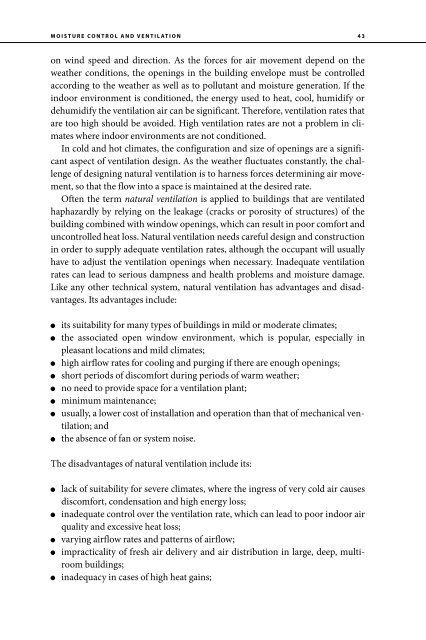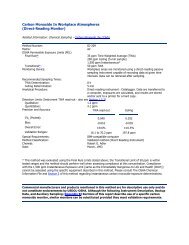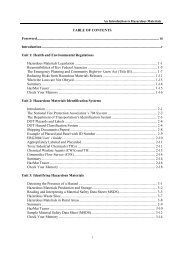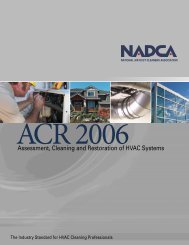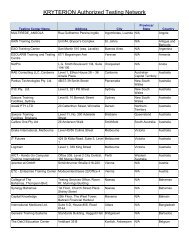Dampness and Mould - WHO guidelines for indoor air quality - PRWeb
Dampness and Mould - WHO guidelines for indoor air quality - PRWeb
Dampness and Mould - WHO guidelines for indoor air quality - PRWeb
Create successful ePaper yourself
Turn your PDF publications into a flip-book with our unique Google optimized e-Paper software.
MOISTURE CONTROL AND VENTILATION<br />
43<br />
on wind speed <strong>and</strong> direction. As the <strong>for</strong>ces <strong>for</strong> <strong>air</strong> movement depend on the<br />
weather conditions, the openings in the building envelope must be controlled<br />
according to the weather as well as to pollutant <strong>and</strong> moisture generation. If the<br />
<strong>indoor</strong> environment is conditioned, the energy used to heat, cool, humidify or<br />
dehumidify the ventilation <strong>air</strong> can be significant. There<strong>for</strong>e, ventilation rates that<br />
are too high should be avoided. High ventilation rates are not a problem in climates<br />
where <strong>indoor</strong> environments are not conditioned.<br />
In cold <strong>and</strong> hot climates, the configuration <strong>and</strong> size of openings are a significant<br />
aspect of ventilation design. As the weather fluctuates constantly, the challenge<br />
of designing natural ventilation is to harness <strong>for</strong>ces determining <strong>air</strong> movement,<br />
so that the flow into a space is maintained at the desired rate.<br />
Often the term natural ventilation is applied to buildings that are ventilated<br />
haphazardly by relying on the leakage (cracks or porosity of structures) of the<br />
building combined with window openings, which can result in poor com<strong>for</strong>t <strong>and</strong><br />
uncontrolled heat loss. Natural ventilation needs careful design <strong>and</strong> construction<br />
in order to supply adequate ventilation rates, although the occupant will usually<br />
have to adjust the ventilation openings when necessary. Inadequate ventilation<br />
rates can lead to serious dampness <strong>and</strong> health problems <strong>and</strong> moisture damage.<br />
Like any other technical system, natural ventilation has advantages <strong>and</strong> disadvantages.<br />
Its advantages include:<br />
its suitability <strong>for</strong> many types of buildings in mild or moderate climates;<br />
the associated open window environment, which is popular, especially in<br />
pleasant locations <strong>and</strong> mild climates;<br />
high <strong>air</strong>flow rates <strong>for</strong> cooling <strong>and</strong> purging if there are enough openings;<br />
short periods of discom<strong>for</strong>t during periods of warm weather;<br />
no need to provide space <strong>for</strong> a ventilation plant;<br />
minimum maintenance;<br />
usually, a lower cost of installation <strong>and</strong> operation than that of mechanical ventilation;<br />
<strong>and</strong><br />
the absence of fan or system noise.<br />
The disadvantages of natural ventilation include its:<br />
lack of suitability <strong>for</strong> severe climates, where the ingress of very cold <strong>air</strong> causes<br />
discom<strong>for</strong>t, condensation <strong>and</strong> high energy loss;<br />
inadequate control over the ventilation rate, which can lead to poor <strong>indoor</strong> <strong>air</strong><br />
<strong>quality</strong> <strong>and</strong> excessive heat loss;<br />
varying <strong>air</strong>flow rates <strong>and</strong> patterns of <strong>air</strong>flow;<br />
impracticality of fresh <strong>air</strong> delivery <strong>and</strong> <strong>air</strong> distribution in large, deep, multiroom<br />
buildings;<br />
inadequacy in cases of high heat gains;


